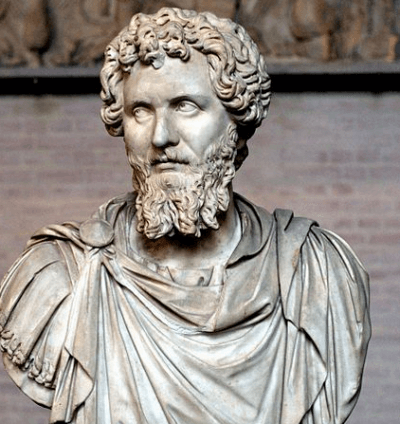What is a Roman Bust?

A Roman bust is a sculpted portrait of the head and shoulders of a person from ancient Rome, that are today typically used as a decorative element in homes, gardens and public spaces. These sculptures are often highly realistic, and can provide a glimpse into the everyday lives of the people who lived during this time period.
Busts were a popular form of portraiture in Ancient Rome, with many wealthy families commissioning artists to create busts of their loved ones. These sculptures were often placed in prominent locations within the home, such as the main entrance way or the atrium.
Today, Roman busts are still admired for their realism and craftsmanship, even modern-day replicas, and they remain a popular choice for decorating homes, gardens and public spaces.
The History of Roman Busts
Much like the ancient Egyptians, the early Romans used busts as a way to honor their dead. These busts were placed on top of tombs or inside the home of the deceased. Unlike Egyptian busts, which were made of stone, Roman busts were usually made out of plaster or marble.
The first Roman busts were created during the Republic (509-27 BC). These early busts depicted Roman military heroes and political leaders. By the end of the Republic, busts began to depict more everyday people, such as poets and philosophers.
During the Imperial period (27 BC-476 AD), Roman busts reached their peak in popularity. Emperors had their own likenesses created, which were then placed all over the empire. Wealthy citizens also commissioned their own portraits. Busts were usually placed in niches on walls, or on top of tufa blocks. They were also displayed in public areas of homes, such as atriums, foyers and gardens.
How Were Roman Busts Made?
Most Roman busts were made of marble, although many were made of bronze, terracotta, or other materials such as pottery. Marble was the material used most often for busts in the public realm, such as honorific portraits of military commanders or political figures. For private use, bronze or terracotta were more common.
Busts were either carved from a single block of marble, or worked in sections and then attached together. The head and sometimes the shoulders were carved separately from the rest of the body and set into place with pins or dowels. A variety of tools were used for carving, including hammers, chisels, and drills.
Once the basic form of the bust was created, further details such as facial features, hairstyle, and clothing were added. A method called "pointing" was used to create fine lines and wrinkles in the stone.
Who Buys Roman Busts Today?
Collectors
In recent years, original Roman busts constructed during the time of the ancient Romans have become a popular item among collectors. Who are these collectors and what motivates them to buy these pieces?
Many of the buyers of original Roman busts are private collectors who are drawn to the history and beauty of the pieces. For some, the appeal lies in the fact that these busts represent a physical embodiment of classical civilization. They view the busts as art objects to be admired and displayed. Others see them as historical artifacts that provide a connection to the past.
Some buyers are motivated by a desire to own a piece of history, while others simply enjoy the aesthetic appeal of Roman busts. Or, there will be those who buy Roman busts simply to try and make a profit by selling them for more than they purchased them for.
Regardless of their reasons for buying and/or collecting, these buyers continue to drive up prices for these popular items.
Individuals
The vast majority of busts available to buy today are not original pieces, and a visit to any garden center or similar retail establishment will have many copies available to purchase for just a tiny fraction of the amount it would cost to buy an original.
These ones are likely to either be made of stone or plastic. They still look great, and you won't be quite as nervous having one of these out on display in the front garden at night as you would be with a priceless orginal!
Conclusion
Busts of famous Roman emperors and prominent citizens continue to be popular today. Along with mosaics, they are one of the most prominent items that come to mind when we think of Roman objects that still feature in the decoration of modern-day gardens and large private houses.
If you are looking to add a touch of elegance to your home or garden, then a Roman bust is a great option, assuming that is, that you don't accidentally buy a priceless ancient bust and have to give it up to a museum!
Not only do they provide decoration, but, representing people who were around in a period of history long before the invention of cameras, they help to keep in our minds what these ancient individuals - who died perhaps 2,000 years ago - looked like when they were alive.



